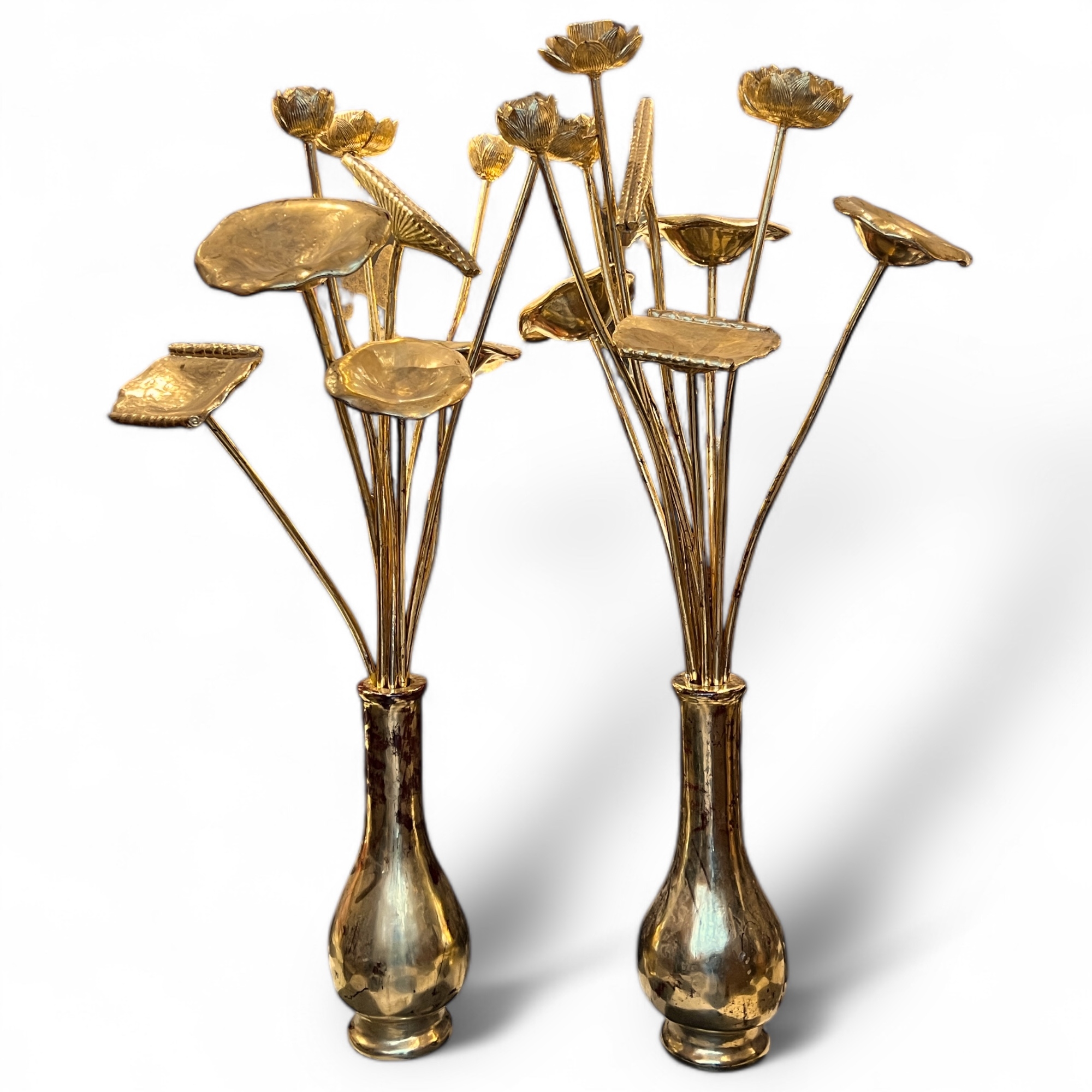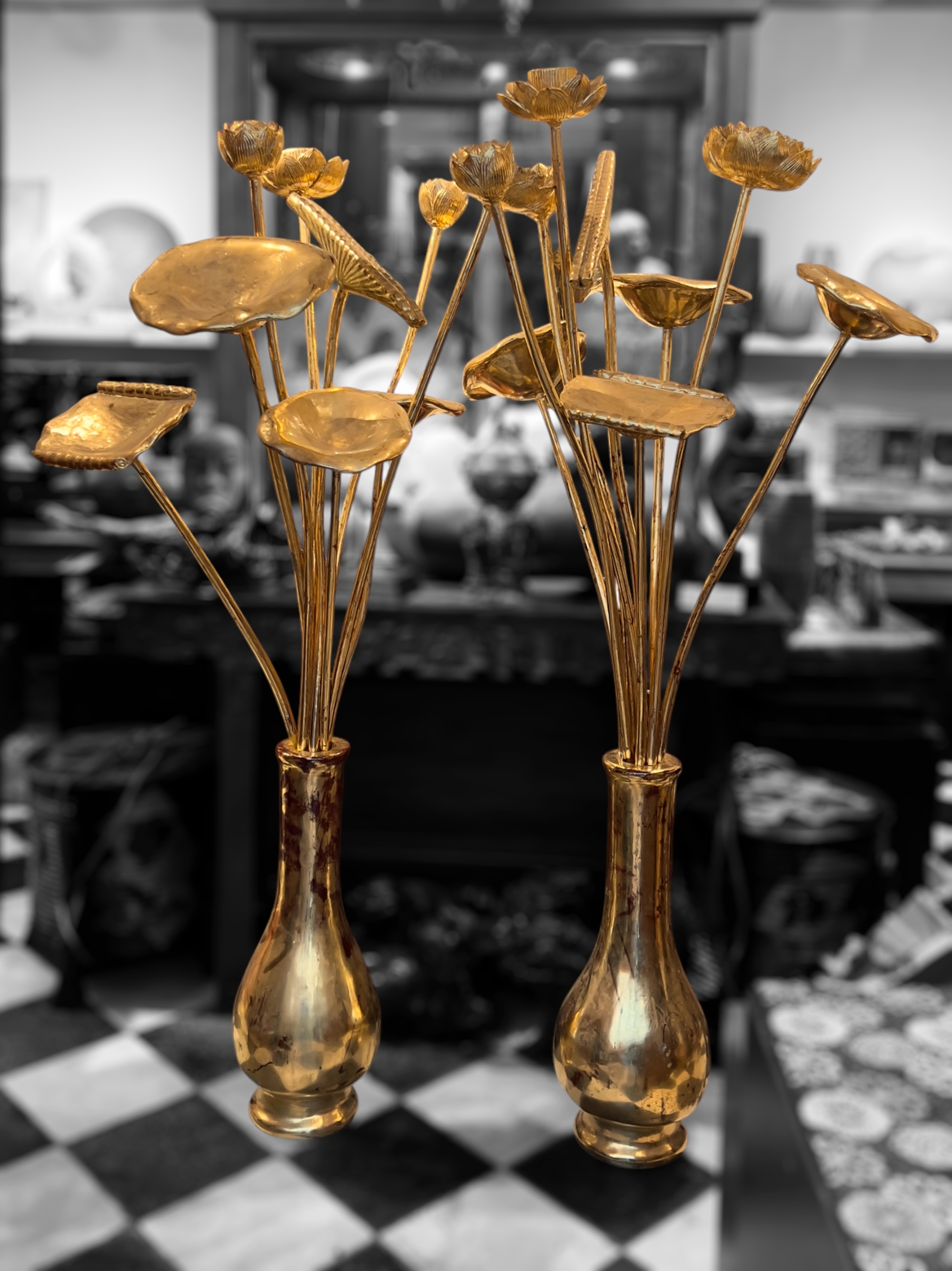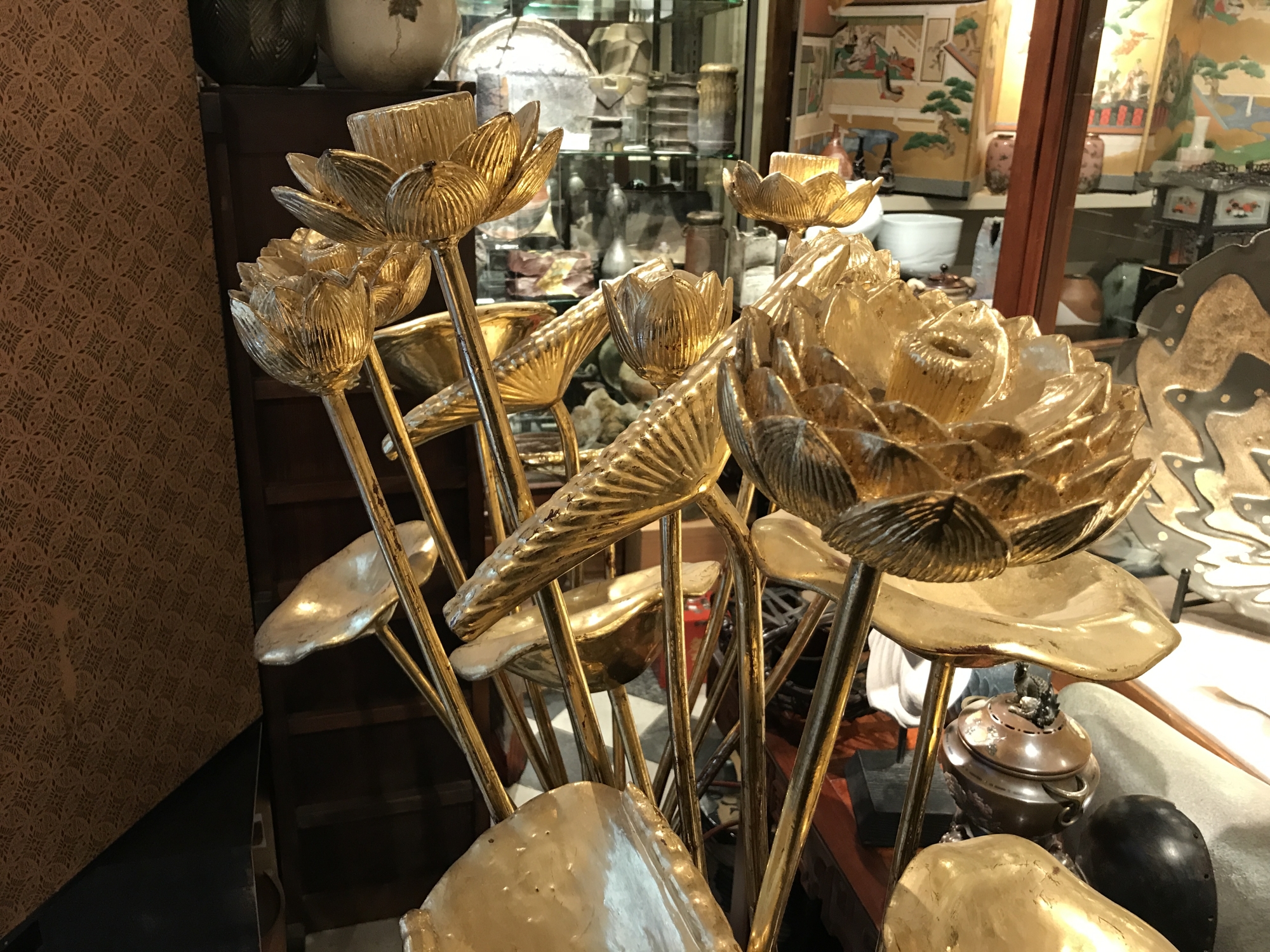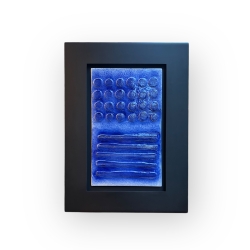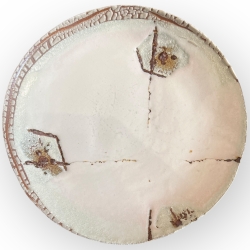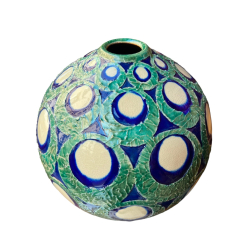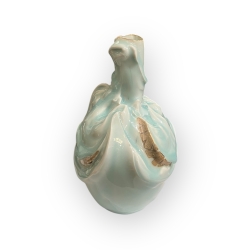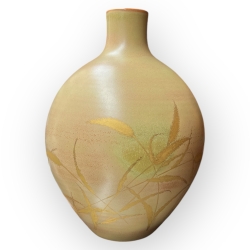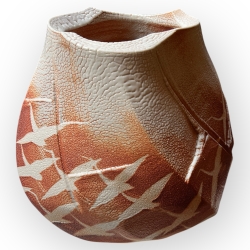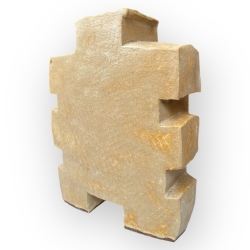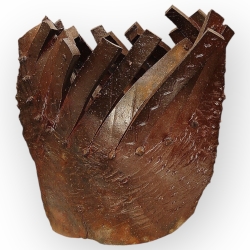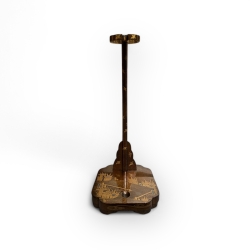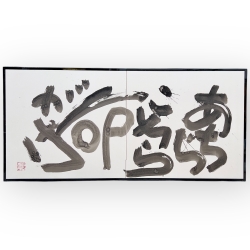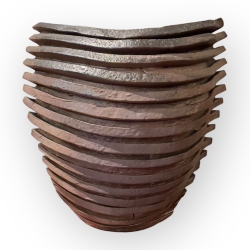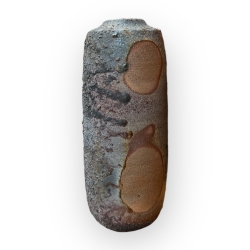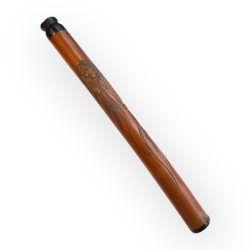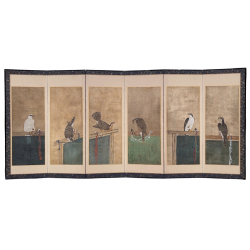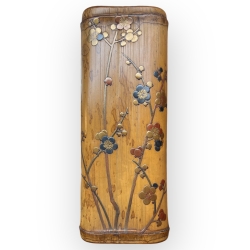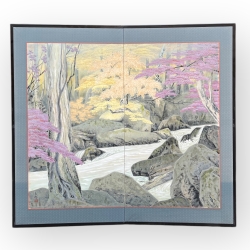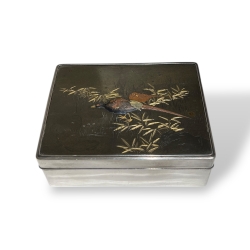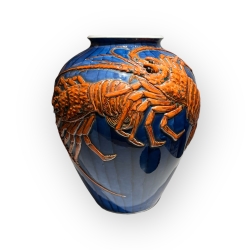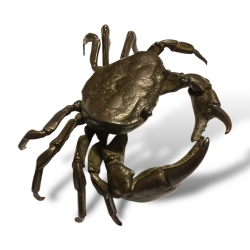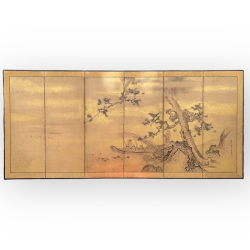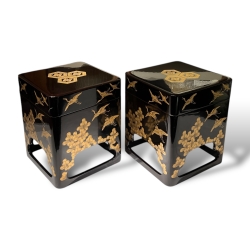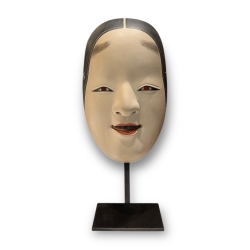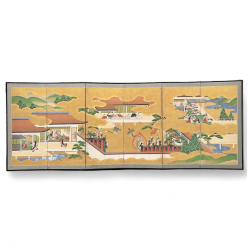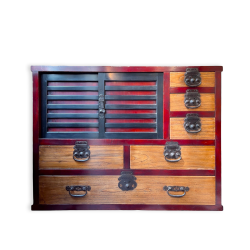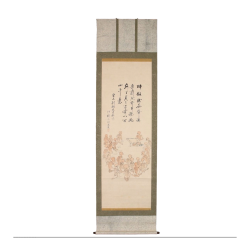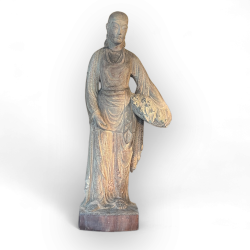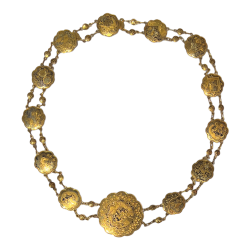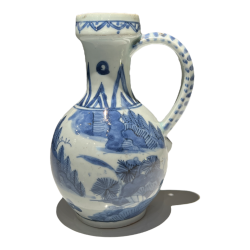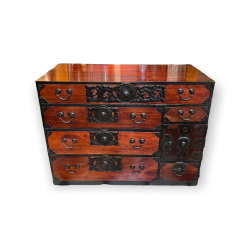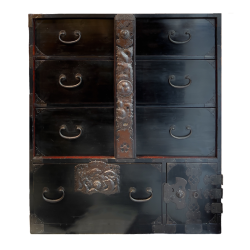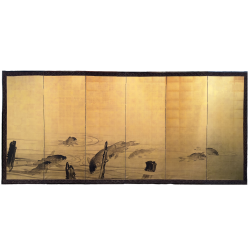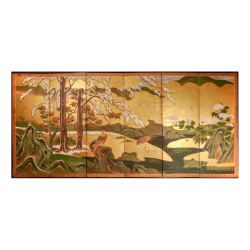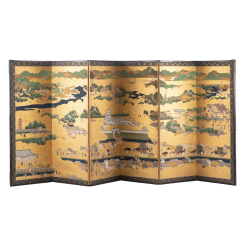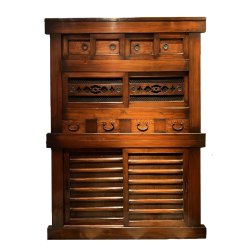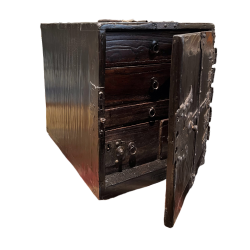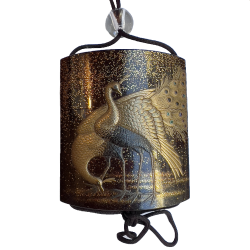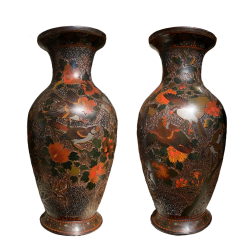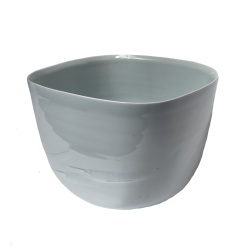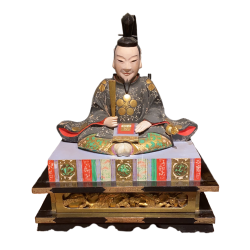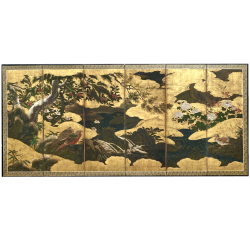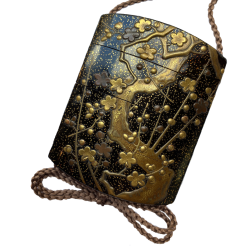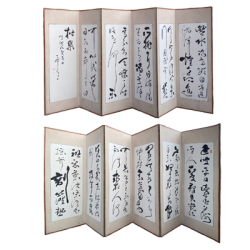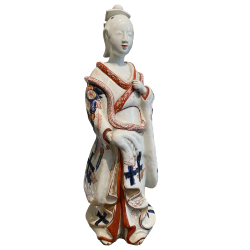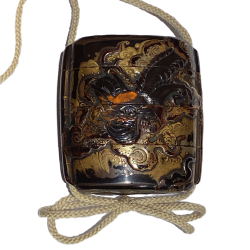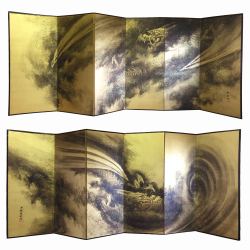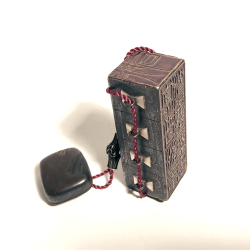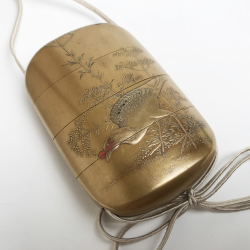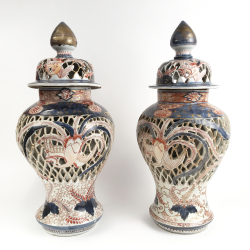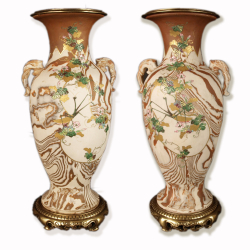
EXPERT ART d'ASIE Cristina ORTEGA Expert CNES et CEFA rts de la Chine et du Japon Asian Art-
Expert Chine Japon- Expert Asian Art - Carré Rive Gauche Paris Rue de Beaune- Expert art d Asie
Très grande paire de bouquets de fleurs en bois doré, Japon époque Taisho-Showa
Description :
Lotus flowers
Très grande paire de bouquets en bois doré, Japon, époque Taisho- Showa
Cet ensemble exceptionnel de très grande taille, se compose de 18 fleurs et feuilles de lotus en bois sculpté et doré, présentées en paire dans leurs vases d’origine également en bois doré. Les fleurs, capturées à différents stades de leur cycle de vie – bourgeons, fleurs épanouies et capsules de graines –, symbolisent le cheminement vers l’illumination dans le bouddhisme. Le lotus, enraciné dans la boue mais s’élevant pour fleurir à la surface, incarne la pureté, la renaissance spirituelle et la résilience face aux épreuves.
Les vases en bois doré avec la même patine, ont été conçus spécialement pour les fleurs. Ils mesurent environ 62 cm. Une fois les bouquets en place, chaque composition atteint une hauteur d’environ 165 cm, créant une présence visuelle élégante et spectaculaire.
Un ensemble rare !
Very large pair of giltwood bouquets, Japan, Taisho-Showa period
This exceptional and very large set consists of 18 lotus flowers and leaves carved and gilded in wood, presented as a pair in their original vases, also made of gilded wood. The flowers, depicted at various stages of their life cycle—buds, fully bloomed flowers, and seed pods—symbolize the journey toward enlightenment in Buddhism. The lotus, rooted in mud yet rising to bloom on the surface, represents purity, spiritual rebirth, and resilience in the face of adversity.
The gilded wooden vases, with matching patina, were specifically designed to complement the flowers. They measure approximately 62 cm, and when the bouquets are placed, each composition reaches a height of about 165 cm, creating an elegant and spectacular visual presence.
A rare and remarkable set!
Set of 22 Carved Lotus Flowers, Japan, Meiji Period (1868-1912)
This remarkable set consists of 22 carved and lacquered wooden lotus flowers and leaves, presented as a pair in their original bronze vases. The flowers, captured at various stages of their life cycle—buds, fully bloomed flowers, and seed pods—symbolize the path to enlightenment in Buddhism. The lotus, rooted in mud yet rising to bloom above the water’s surface, represents purity, spiritual rebirth, and resilience in the face of adversity.
Originally brightly gilded, the flowers now display a golden patina, likely the result of prolonged exposure in a temple, where they absorbed incense smoke and the passage of time. Each element showcases the refined craftsmanship of Meiji-period artisans, with intricate details and perfect harmony between materials and proportions.
The bronze vases, baluster-shaped, are adorned with handles in the form of elephant heads, a symbolic motif often associated with wisdom and memory in Asian traditions. They measure approximately 27 cm in height and 20 cm in diameter. With the bouquets in place, each composition reaches a height of about 90 cm, creating an imposing yet elegant visual presence.
The precise dimensions further enhance the balance of the ensemble: the tallest flower measures approximately 80 cm, and the widest leaves span 20 cm. These works, blending art and ritual, offer a precious glimpse into Japanese aesthetics and spirituality

